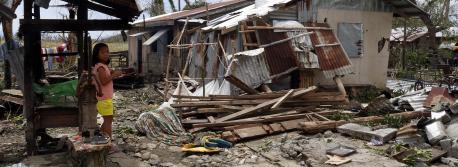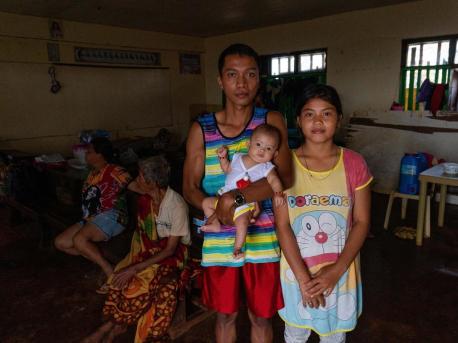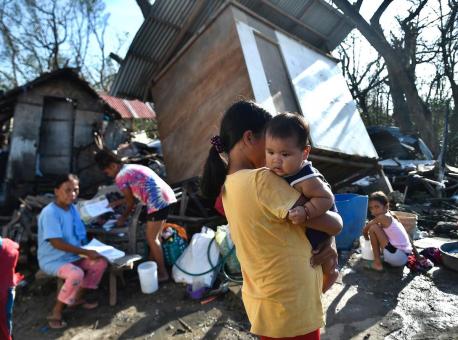
Typhoon Relief
UNICEF responds to hundreds of emergencies every year — including typhoons and other weather-related disasters — rushing emergency relief to children and families in need.
What is a typhoon?
Like a hurricane, a typhoon is a giant, rotating storm system that brings wind, rain and destruction. Typhoons begin as tropical cyclones in the warm tropical waters of the northwestern Pacific Ocean. A tropical cyclone is classified as a typhoon once its circulating winds reach a sustained speed of 74 miles per hour. It is called a super typhoon when its winds reach or exceed 150 miles per hour. Because of the Pacific Ocean’s consistent warm water temperatures, typhoons form year-round, with a peak season between May and October.
The situation for children
Like other natural disasters, typhoons rob kids of the security they need to stay healthy, develop and grow. A typhoon's destructive winds can uproot trees and reduce homes, hospitals, schools and entire towns to rubble, displacing entire communities. Children often get separated from parents in the chaos.
When children and families are displaced, educations are interrupted and children become more vulnerable to violence, exploitation and abuse.
Typhoons often lead to extreme flooding, which can disable sanitation facilities and lead to the contamination of water supplies. Basic needs for safe water for drinking, cooking and personal hygiene go unmet, increasing health risks — especially for children — as deadly waterborne diseases become more difficult to contain.
Because a typhoon is more likely to hit before or during harvest season, entire crops can be lost, leading to food scarcity and rising rates of malnutrition.
How UNICEF helps typhoon victims
UNICEF responds to hundreds of emergencies every year, including some of modern day’s worst typhoons.
When typhoons and other natural disasters strike, UNICEF is among the first on the ground, often prepositioning supplies in advance of an emergency response. UNICEF's supply operation, which includes the largest humanitarian supply warehouse in the world, enables the delivery of lifesaving supplies to anywhere in the world within 48 to 72 hours.
Working with local partners, UNICEF provides safe drinking water, hygiene and sanitation kits, medicine, nutrition and more. UNICEF also creates Child-Friendly Spaces and temporary classrooms, safe spaces for displaced children to learn and play and receive psychosocial support. UNICEF protection teams work to reunite separated children with family members.
In the aftermath of an extreme weather event like a typhoon, UNICEF helps communities build back better — to prepare for the next emergency by strengthening health care systems, schools and other social services and increasing their resilience.
Learn more about how UNICEF works to address climate change and its impact on children.
Help UNICEF respond when weather disasters strike. Donate today.



